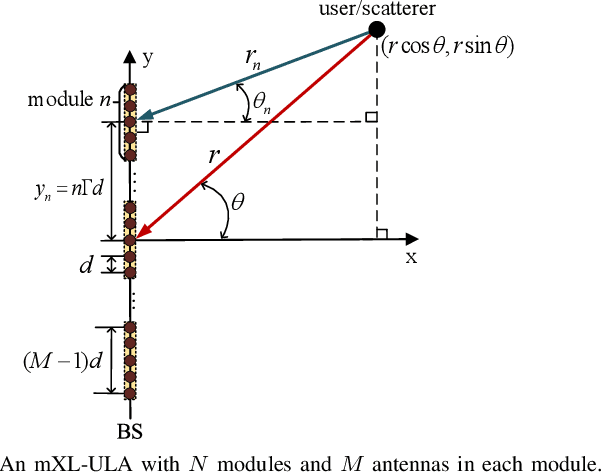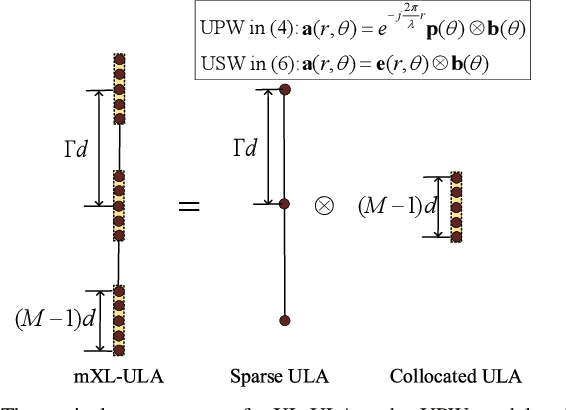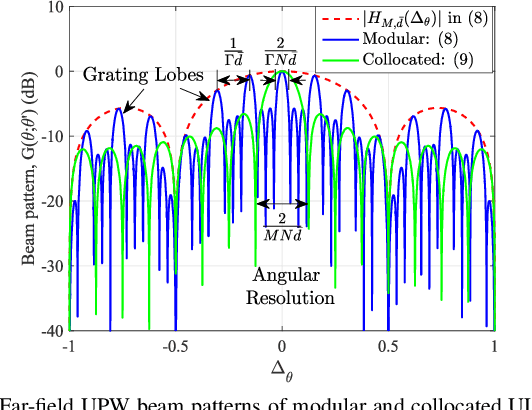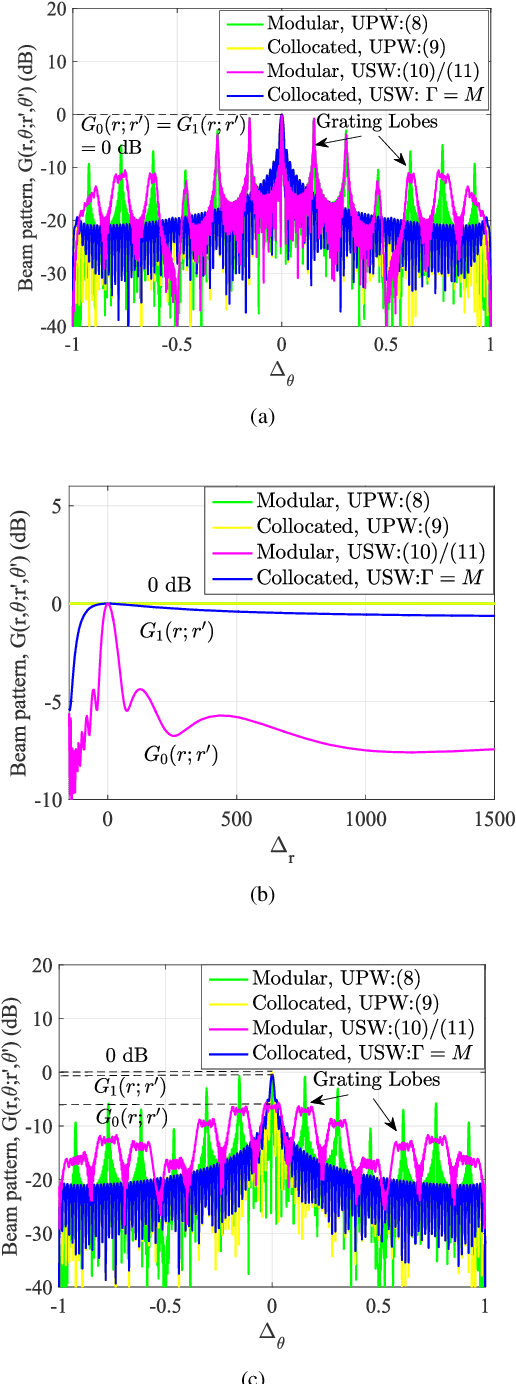Near-Field Beam Focusing Pattern and Grating Lobe Characterization for Modular XL-Array
Paper and Code
May 09, 2023



In this paper, we investigate the near-field modelling and analyze the beam focusing pattern for modular extremely large-scale array (XL-array) communications. As modular XL-array is physically and electrically large in general, the accurate characterization of amplitude and phase variations across its array elements requires the non-uniform spherical wave (NUSW) model, which, however, is difficult for performance analysis and optimization. To address this issue, we first present two ways to simplify the NUSW model by exploiting the unique regular structure of modular XL-array, termed sub-array based uniform spherical wave (USW) models with different or common angles, respectively. Based on the developed models, the near-field beam focusing patterns of XL-array communications are derived. It is revealed that compared to the existing collocated XL-array with the same number of array elements, modular XL-array can significantly enhance the spatial resolution, but at the cost of generating undesired grating lobes. Fortunately, different from the conventional far-field uniform plane wave (UPW) model, the near-field USW model for modular XL-array exhibits a higher grating lobe suppression capability, thanks to the non-linear phase variations across the array elements. Finally, simulation results are provided to verify the near-field beam focusing pattern and grating lobe characteristics of modular XL-array.
 Add to Chrome
Add to Chrome Add to Firefox
Add to Firefox Add to Edge
Add to Edge